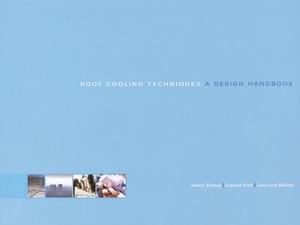Anyone interested in the design of roof-cooling techniques might want to check out a new book published by Earthscan.
The handbook (Roof Cooling Techniques – a design handbook) has been written by three international experts on low-energy buildings and looks at the fundamental principles of roof cooling techniques as well as their application, key design considerations and recent experimental work.
The book is divided into two main parts. The first deals with the principles of roof design, dividing the environmental functions of roofs into protective (solar control, thermal insulation, heat storage and thermal capacity) or selective (radiative, evaporative and convective cooling as well as planting of roofs) and introducing the main physical principles behind each. It also provides an overview of traditional and current construction techniques, drawing on examples from several European countries.
Part two of the handbook looks at specific systems and techniques; for example, roof ponds, cooling radiators and planted roofs, considering their advantages and disadvantages, key components of construction and built examples as well a providing a round-up of recent research. A chapter is also included on comparative performance indicators to help readers make choices on system selection and design.
The handbook is accompanied by a CD-Rom, with software that enables readers to evaluate their own designs. Weather data for a number of locations is provided or users can add their own. For each cooling technique modelled, the tool also creates an air-conditioned or free-running reference building against which the cooling technique is assessed in terms of possible cooling energy savings and/or improvements to indoor thermal comfort conditions.
Source
Building Sustainable Design






















